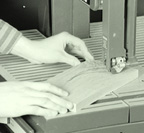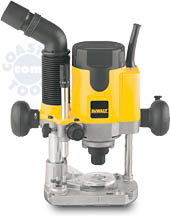SPLINTERS
Tennessee
Valley Woodworkers
 Vol. 16/ Issue3
March 2001
Editor: Tom Gillard Jr.
Vol. 16/ Issue3
March 2001
Editor: Tom Gillard Jr. 

Meeting Notice:
The next meeting of the TN Valley Woodworkers
Will be held, March 20 at 7:00 p.m. in the
Duck River Electric Building, Dechard, TN
All interested woodworkers are invited!


The following people have agreed to serve as contacts for their particular
skills. If you have questions, suggestions
for activities, or other comments relating to these skills, please
call these folks. Their interest is to help the
club better serve their area of expertise. Your participation
with them will help them achieve that goal.
Alice Berry 454-3815 Design
Phil Bishop 967-4626
Finishing
Tom Church 967-4460 Turning
Harry May 962-0215
Carving
Bob Reese 728-7974 Sharpening
Jim VanCleave 455-8150 Jointery
Maurice Ryan 962-1555 Health and Safety

Calendar of Events
Event
Date
Spring Workshops
TBD
 Spring Seminar
TBD
Spring Seminar
TBD
Turning "bee"
5/12
Summer Picnic
6/23
Fall Seminar
TBD
Coffee County Fair
9/20-22
Christmas Party
12/7
Be sure and bring your items for
show and tell. We are interested in the activities of ALL our members!
MARCH PROGRAM
Tom Church just got back from Windsor chair class at John Campbell Folkschool
a week ago...I'll have two continuous arm Windsor chairs (with compound
bend in the back/arms) one finished and the other ...kinda finished.....I'll
do an overview of construction, jigs, fixtures, bending, hand shaping and
a of course some fond words about John C Campbell Folkschool.
How the environment affects your woodworking
As the seasons change, so will the dimensions of your
wood. But, just as you survive the seasons by living in a
temperature-controlled house, you can help your wood
weather nature's ups and downs, too.

STRATEGY 3: As much as possible, control the temperature and
humidity level in your shop and wood-storage area so they
approximate the environment where your project ultimately will be
located. Basement and garage shops in many areas of the country
typically require dehumidification in the summer and heating during
the winter months. This will help minimize wood movement that
might occur after you move the project to its final destination in your
home or elsewhere.

STRATEGY 4: Take delivery of your wood at least one week
before you begin working with it. This gives it time to acclimate to
your shop environment. If the wood is being delivered from another
part of the country, where the humidity level may be drastically
different, give the wood a full month to acclimate. For the wood to
adapt properly to its new surroundings you should store it at least 1'
off the floor, with evenly spaced stickers that allow air to circulate
freely as shown below.

STRATEGY 5: If you're building a project under humid
conditions, such as during the middle of summer, assume that the
workpiece probably will not swell much more. So, in high-humidity
conditions you can size frame-and-panel doors and drawer fronts
so they're only about 1/16" smaller in width and length than their
openings.

However, during the winter, when the air is typically as dry as it will
get during the course of the year, you will have to plan for more
clearance. Under these conditions, an average frame-and-panel
cabinet door should be about 3/16" smaller in width and length than
its opening (3/32" clearance all around). Likewise, a drawer front
should be about 3/16" smaller across its width than its opening.
Because it won't move along its length, you can make the drawer
only 1/16" smaller in this dimension.
KNICKKNACK SHELF:
Give yourself a gift with this versatile knickknack shelf.

This knickknack shelf makes a great gift because it can be
used for many different purposes and in many different places.
The top is designed with a slotted groove for safely displaying decorative
plates or family pictures. The four Shaker-style pegs can be used for hanging
everything from hand-dipped candles to keys or necklaces. The dowel rod
can be used to hang towels, ties or even baby blankets. Heart-shaped cutouts
in the back, plus the contours in the sides, give it a country look that
will warm any room. But what makes this project a real winner is that it
is easy and fun to build.
TIPS
Make sure you buy the Shaker pegs (E) before you purchase the rest of
the wood for the project. Otherwise, you may not be able to find Shaker
pegs to match your choice of wood. A number of mail order sources offer
Shaker pegs, but they are available in limited sizes and wood types. Also,
be sure to drill the holes in the back (B) to custom fit the pegs.
CONSTRUCTION
Begin by cutting all of the project parts to their overall
widths and lengths. Make sure to joint all of the edges on your stationary
jointer from longer material lengths.

Lay out the grid for the contours in the sides (C),and mark the points
where the design intersectseach grid line Connect the points with
a French curve, and then cut out the shape with a band saw.

Then rout a 1/8" cove all around the top (A) workpiece. Use
a pilot guide with your router bit, and move the router counterclockwise
around the perimeter of the top workpiece. Make sure that the workpiece
is clamped securely to avoid accidents. Now use your table saw to
cut a 1/4" by 1/4" deep by 20" long stopped groove into the top. This groove
is used for displaying decorative plates. Move the router counterclockwise
around the perimeter of the workpiece.

Next, transfer the pattern for the back (B) and sides (C) onto
the workpieces. Then cut them out with a saber saw or band saw. Drill starter
holes for the heart-shaped cutouts in the back, and then cut out the section
in between with your saber saw. Use a plywood-cutting blade that can cut
a tight radius. Use a Forstner bit to drill 1 in. diameter holes into the
heart-shaped area of the back (B). Be sure to use a backup board when drilling.
Then cut out the remaining shape with a saber saw.

Carefully sand all the contours in the back and side workpieces,
using a drum sander installed in your drill press. Then with a 1/8" cove
bit, rout a decorative cove all around the back workpiece as indicated
in the illustration.
Next, locate the holes for the pegs (E) in the back workpiece
and the stopped holes for the dowel (D) in the side workpieces. Drill these
out with a drill press.
ASSEMBLY
Secure the back, top and sides to one another with No.
8 by 1-1/2" flathead wood screws and carpenter’s glue. You must predrill
the holes. Note that the holes in the top should be countersunk, while
those in the sides should be counterbored. As you assemble the sides
to the top and the back, make sure to install the dowel (D). Apply a little
dab of glue on each end of the dowel.
After securing the top, plug the hole recesses in the sides
and sand flush. Complete the project by gluing and installing the Shaker
pegs.
FINISHING
Give the project a fine sanding and apply a stain of your
choice. Next, give the project a complete coat of polyurethane sealer,
sanding when dry. Then give it a final coat of polyurethane. A satin finish
polyurethane is preferred.
MOUNTING
When mounting the shelf, try to find the wall studs The
shelf should be mounted to at least one stud. Mark two mounting
holes onto the back of the shelf, and drill these out to accommodate No.
10 by 2-1/2" flathead wood screws. Counterbore the holes, and then use
two plugs or buttons to fill the hole recesses. It is not necessary to
glue these buttons in place. If the shelf is not mounted to a wall stud,
substitute the screws with an appropriate fastener and wall anchor.
Scraper Workshop
As announced at the February meeting Jim Van Cleave and Henry Davis
will hold a hands-on workshop on sharping and use of the Hand Scraper.
The workshop will be held on Saturday April 7 at Henry’s shop in Tullahoma.
Jim and Henry would like those interested to come to Henry’s shop in groups
of four or less at one hour intervals. They figure it should not take over
about 45 minutes for you to master using this unique tool.
There has been some questions about just what type scraper the workshop
will cover. There are paint scrapers, cabinet scrapers, hand scrapers and
probably some other type scrapers. This workshop will be on the flat
rectangular ones that you hold in your hands as opposed to the scrapers
that are mounted in a frame or holder of some type.
Jim and Henry ask that you bring your own scraper. You
do not need to bring files, burnishers, sharping stones, etc.
If you do not have a scraper they are available in most woodworking supply
catalogs. On page 68 of the Feb. 01 issue of WOODWORKER’S
SUPPLY they are listed as Cabinet scrapers, the straight scraper is
listed at $4.50. ROCKLER
list them on page 24 in their Spring 1 2001 catalog as SANDVIK SCAPERS
at $8.99. It was reported that this type scraper was available at Lowe’s,
but they could not be located there.
If you are interest in attending this workshop call Henry at
393-3191 or see him at the March meeting to schedule your time. If
you have questions about scrapers and their use or need more information
about the workshop feel free to call Jim at 455-8150 or Henry.

ROUTER DRAWING

Just a reminder to resister at the March meeting for the router drawing.
Remember that the only way you can register is to be at the meeting.
WELCOME NEW MEMBERS
We are always happy to have new members, but last month was sort of
special. We had two former members to rejoin us as well as two new members.
One of our charter members Terry Penn rejoined us as did Dave
Cortner . Dave had been a member in 1998 . New faces
for us last month were Johnnie Brown and Bob Lowrance. We welcome
all of you, old and new.
WEB SITES
of INTEREST
Arrowmont
School of Arts and Craft
WOOD
ONLINE newsletter
Falls Mill
Appalachain
Center for the Arts
Forest
Products Lab. 1999 Wood Handbook
Jim DelToro
Highland Hardware
Woodworker's
Journal
John C Campbell Folkschool


Saw Blade Sharpening Services: Branching Out is now offering their
services as a drop off spot to have your saw blades sharpened. The
blades will be picked up (Tuesdays), sharpened, and dropped back off at
Branching Out. The Leitz Tooling Systems out of Collierville, TN
will do the sharpening. Call (393-0525) or stop by for details.
Webmaster:
Tom Gillard Jr.

 Vol. 16/ Issue3
March 2001
Editor: Tom Gillard Jr.
Vol. 16/ Issue3
March 2001
Editor: Tom Gillard Jr. 
![]()
![]()
![]()
![]()










